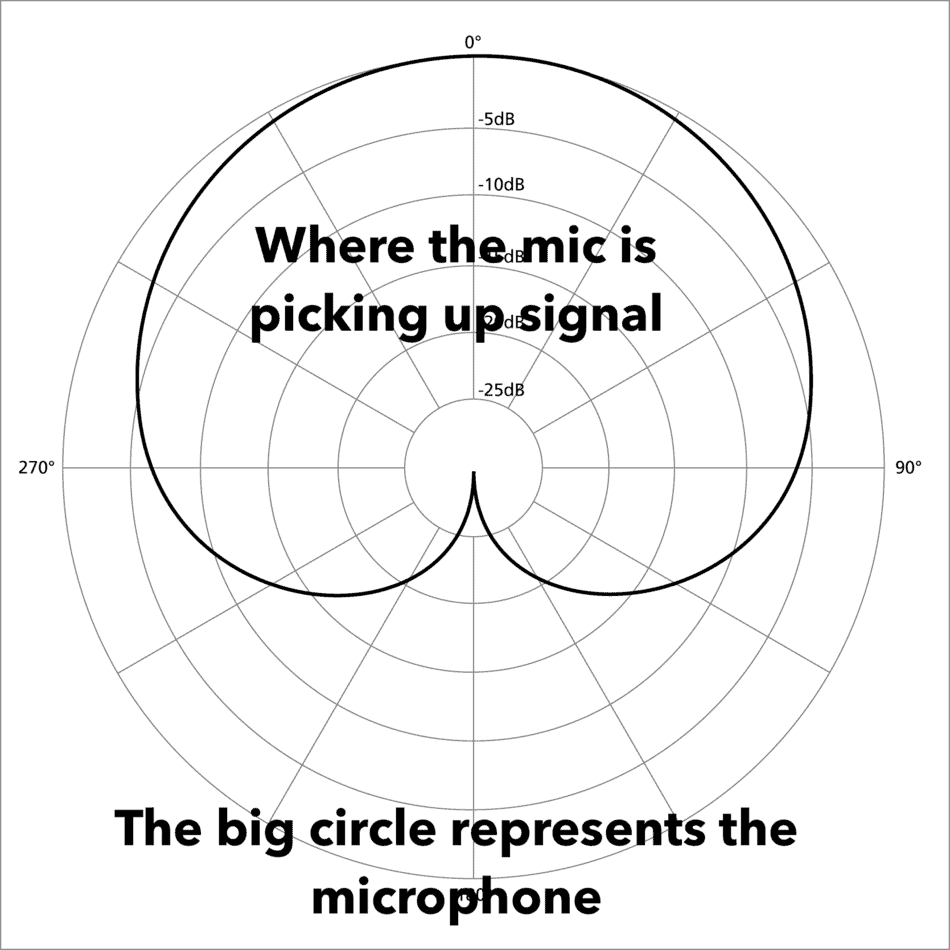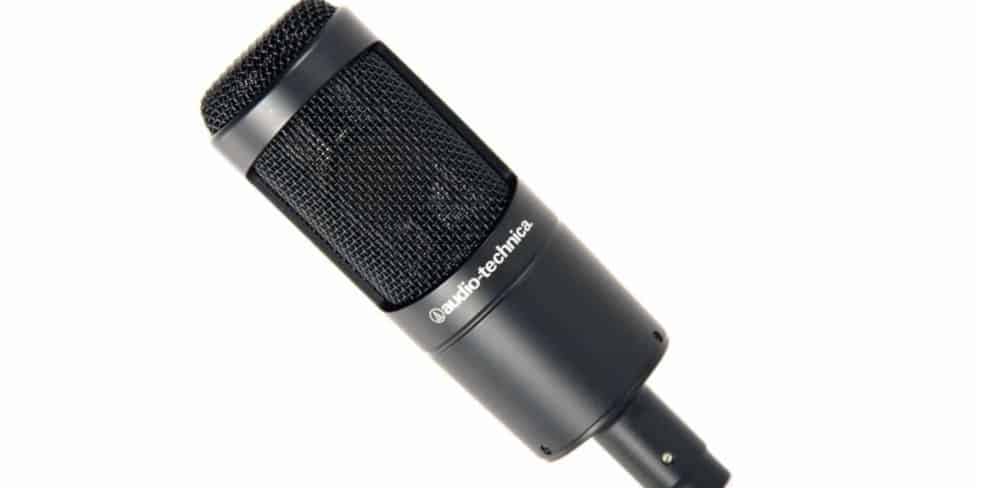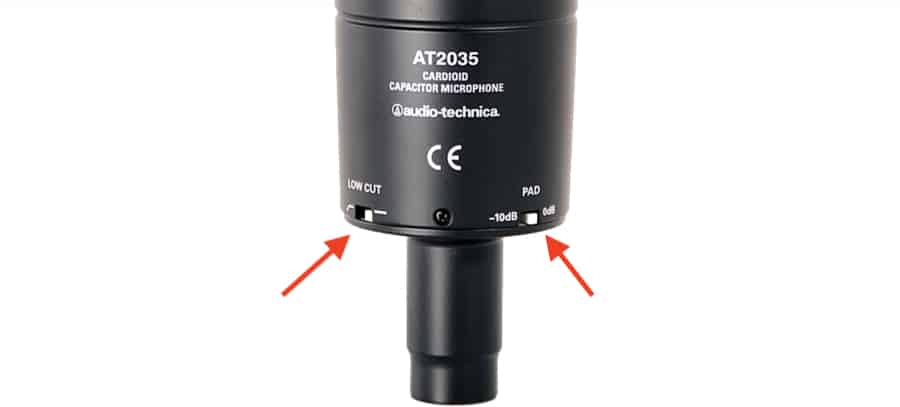As an Amazon Associate, I earn from qualifying purchases. Additionally, I earn a commission through each purchase made on Amazon, Clickbank, zZounds, Plugin Boutique, Plugin Fox, Thomann, Jam Play, and Punkademic from one of my links.
If you’re in the market for a new condenser microphone, then look no further than the Audio-Technica 20 Series AT2035 Studio Microphone Cardioid.
Check the price of the AT2035 on Amazon here.
Background
Audio-Technica has been around for forever.
The company was first created in 1962 in Shinjuku, Japan, and their primary function, in the beginning, was creating phonograph cartridges.
Around ten years later in 1972, they opened up shop in Ohio, USA, and in 1974, they began creating headphones based on transducer technology which first started in Japan.
Many of their headphones, including the ATH-M50x which I’ve written about before, are considered as an industry standard.
For people who work with audio in some capacity, but especially recording, Audio-Technica microphones are usually one of the most commonly suggested companies, not only for recording but also for mixing and music production.
These days, Audio-Technica is a leader in both headphone construction and microphones.
The AT2035 Cardioid Condenser Microphone
The AT2035 is a relatively new model which is designed as an improvement from their classic AT2020 microphone, except with more features and better performance, but obviously not as premium as something like their AT4050 (also from Amazon).
Similar to 2020, the AT2035 has what’s called a fixed cardioid pattern, and it’s created specifically to address high SPLs, (sound pressure level) along with very minimal background noise.
In case you’ve never heard this term before, The sound pressure level is another way of measuring how much sound the unit can take without causing distortion or crackling.
This is one of the most widely recommended condenser microphones for people looking to get their very first condenser microphone and it’s commonly suggested for singers. If that’s you, get Singorama as well from their site which is the next best thing from a real-life vocal coach.
The term “Condenser,” essentially, is another way of referring to a capacitor, which is a piece of electrical equipment that stores energy. The capacitor in a condenser microphone essentially turns acoustic energy into electric energy.
Condenser microphones like the AT2035 tend to be more responsive than other microphones, like dynamic mics, so for that reason, it’s more useful for capturing intricacies of the audio signal, and thus, perform well for recording.
This is what’s called a “large-diaphragm condenser mic,” contrasted to small-diaphragm condenser microphones.
As I’ve explained before in my article on condenser mics, large-diaphragm condenser microphones such as the AT2035 are great for, not only vocals, but also for drum overheads, acoustic guitars, and pianos. On account of its wide and smooth frequency response, the AT2035 is a great choice for picking up on little nuances, sensitivities, and details.
Moreover, large-diaphragm mics tend to have a great low-frequency response.
Due to its sensitivity, the AT2035 isn’t really used for on-stage, because they’ll pick up a lot more signal and will likely lead to distortion and clipping.
In other words, this microphone is not meant for recording sounds that are extremely high in volume, such as a live band in a bar.
In addition to being much bigger than the small-diaphragm mics, usually an inch or more, the larger condenser microphones are known for being more sensitive and producing less noise.
The term cardioid is meant to define the way in which the AT2035 picks up sounds.
In other words, a cardioid microphone pretty much ignores any sounds that come from the back or the sides of the microphone, and instead, focuses on the sounds coming directly in front of it, which makes it great for recording the instruments I mentioned above.

Right off the bat, it’s important to note that this microphone is an active mic, which means it needs at least 48v of phantom power to work because after all, it is a condenser cardioid capacitor microphone.
In other words, it’s imperative to own an audio interface such as the Focusrite Scarlett 2i2, which comes with the phantom power option.
If you’re in the market for an audio interface, grab the Focusrite Scarlett 2i2 from Amazon which I’ve explored before in my article on audio interfaces where I talked about the one thing that I really liked about it.
If you try and use this microphone with an XLR to USB cable, it’s not going to work if you plug it in directly to your computer without phantom power.

What Comes With The Microphone?
- You get the shock mount
- You get a microphone stand adaptor 5/8” to 3/8″
- A padded carrying case
- documentation
- and one-year warranty
**It’s worth noting that most microphones don’t come with a stand, so definitely go out of your way to purchase a mic-stand like this one from Amazon, on which you can clip the shock mount onto.
In terms of its construction, the 20 series from Audio Technica is hailed for the fact it’s made out of steel entirely, including the nice metal grill. Because of its build, the mic has some weight to it.
The microphone comes with two different switches on the bottom of the unit, including the switch for -10dB to 0dB Pad, for the sake of recording much louder instruments such as micing up a guitar amplifier, in addition to a bass-roll off, also called a Low-Cut, which attenuates low-frequencies below 80Hz.

In other words, the pad is meant for reducing hot signals, so you can actually flip the switch and take 10dB off the signal right away off the microphone.
A lot of people like this microphone for the way in which it doesn’t add a boosted low-end to your vocal recordings, which, apparently, is a common problem with microphones.
Unfortunately, the shock mount for the microphone is made out of all plastic, which – if you’ve read my article on the iRig HD 2 – you know that I’m not a big fan of plastic, however, thankfully, the shock mount is at least made out of super-hard plastic, so there is some comfort in knowing that.
In other words, you shouldn’t have to worry about breaking it too easily if you drop it a bunch of times, although I haven’t had the misfortune of doing that yet.
To connect it into the shock mount, you simply drop it down into the mount, and there’s no clip or snap into place, it just sits in the mount nicely without much effort.
Specifications
The frequency range is 20Hz to 20,000kHz.
There tends to be a peak in presence around 12,000kHz, however, for the most part, the microphone aims to sounds neutral or flat. Clearly, the microphone is designed for a flat sound rather than a microphone with boosts in certain frequency ranges.
The AT2035 has a signal-to-noise ratio of 82dB at 1,000kHz at 1Pa.
The diameter of the capsule is about 0.8 inches.
It weighs 403 grams and is 170mm long. The widest part of the microphone comes in at 52mm in diameter.
As it was noted above, the entire thing is made out of metal with a satin black finish, with the two switches, the low-cut filter, as well as the pad, appearing on the bottom of the microphone.
The bottom of the unit has the standard XLR prong, so make sure you have an XLR cable like this one from Amazon.

What It Sounds Like
The AT2035 sounds a lot like the model on which it’s based, the AT2020, however, there is less background noise and is more sensitive.
If you use the low-cut filter on the microphone, it will decrease a bit of the warmth, but it will eliminate low-frequency spill into other frequencies and will help eliminate “popping.”
Some people describe 2035 as leaning toward vintage or old-school sound, in the sense that it’s a bit warm and sounds compressed just a little bit with a very gentle and smoothed out high-frequency response.
For the sake of a home recording studio, you won’t go wrong with this microphone, and this unit, specifically, is quite popular with singers.
For the price, the AT2035 is arguably one of the best mics to choose for someone who’s looking to start getting serious about better audio recordings.
There are definitely cheaper models out there, but in this price range, you’re not going to find a better mic that balances a good price with useful features.
Perhaps one of the more common microphones out there – and definitely the most recommended – is the Shure SM58 from Amazon, which I’ve recommended on this website as well for a very specific reason.
If you’re looking to make an improvement, going from the SM58 to the AT2035 will be a significant jump.
The SM58 doesn’t sound nearly as good as the AT2035 and is almost dull in comparison to it.
Comparing it to the original model on which it’s based, 2020, the AT2035 has way less noise, a flatter response, and it comes with more useful features and bonuses, including the aforementioned low-cut, pad, and shock mount.
Check out the user reviews on this product and you’ll see that the vast majority of people are happy with their purchase.
Conclusion
I hope this review was helpful to you in your purchase of a new microphone.
If any of your friends would find this helpful or interesting, make sure to share the article to them on social media.

 Written By :
Written By :